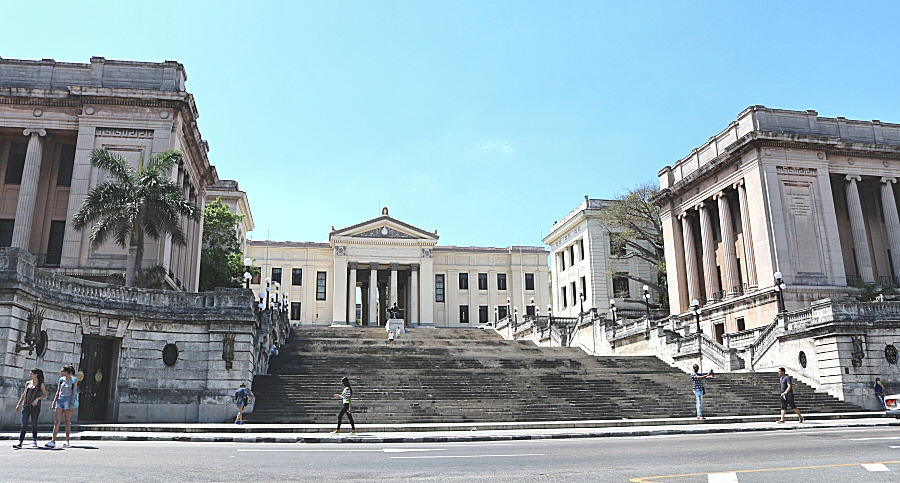
The University of Havana is located at the beginning of the San Lazaro street, bordered by the street L and the 27 de Noviembre street in Vedado, about 200 meters south to the Hotel Habana Libre.


The main campus of the University of
Havana, the largest., oldest, and leading academic institution
in Cuba, is in Vedado.
In the first half of the 18th century
the Dominican friar that were concerned in the education system
of the island, requested for the permission to start with the
studies in their convent. At that time, children of wealthy
families had to go Mexico, Santa Domingo or Spain to receive
education. In 1721, the Dominican friars obtained the approval
of founding an university in their convent, Convento de San Juan
de Letrán, also known as Convento de Santa Domingo, by the bull
issued by Pope Innocent XIII. Counts of Bayona had great support
in this event.
In 1728 King Philip V of Bourbon
confirmed by a Royal Decree the establishment of the Real y
Pontificia Universidad de San Gerónimo de La Habana in the
renovated convent. This was the first university in Cuba and one
of the first universities founded in the Americas. This date is
accepted as the date of the establishment of the modern
University of Havana today. The university was providing
training for theology, philosophy, canons, law, art and medicine
at that time.
Except the short period in 1762 in
that the invading British army used the building as barracks,
many children of wealthy families received education in the
fields of laws, medicine, mathematics, grammar, theology and
philosophy, attending the five faculties of the university until
1841. The prominent personalities of Cuban thought, science and
culture that studied in this university are Felix Varela, Manuel
de Céspedes, Francisco Vicente Aguilera, Ignacio Agramonte,
Francisco de Arango y Parreňo, Tomás Romay, José Augustín
Caballero, Antonio Bachiller y Morales, José María Heredia,
Rafael María de Mendive, José Antonio Saco and Cirilo Villaverde.
In the course of time, the Dominicans
lost their power, and finally also the possession of their
property, so that they could not continue with the education
that was their main activity as tutors. In 1841 their building
passed into the hands of the state, and when the administration
of the university was undertaken by the Spanish government,
after a process of reforms the university was called Universidad
Real y Literaria de La Habana in 1842. It was no longer a
religious institution and changed its status to become a
secular, royal and literary institution.
Until the beginning of the 20th
century, the university increased its scientific level by adding
new faculties. The university graduated the first woman,
Mercedes Riba, in 1885. Upon the end of the Spanish rule on the
island in 1898, the administration of the university changed
hands, so that the most modern teaching methods were initiated.
However, the structural condition of the university building in
the Convento de San Juan de Letrán was inappropriate. In 1902,
the American military government on the island ordered the
transfer of some faculties of the university to some buildings
on the Hill Aróstegui in Vedado (also known as Loma
polytechnics), where it still stays. At the beginning of the
republican life, the first buildings on the hill began to be
built and the existing ones were adapted to the academic
purposes of the university that had received the name of
University of Havana.
The founding of the Federación Estudiantil Universitaria (University Student Federation) in 1922 and the inauguration of the staircase in front of the university building in 1928, even though some of the buildings of the university were pending to be constructed, are some of the events that should be mentioned in the first half of the 20th century. In 1956, when the anti-government protests increased in the university, the President Fulgencio Batista closed the university. After the revolution in 1959, the doors of the Havana University were reopened and the education system in the university was reorganized by a set of transformations according the university reform in 1962.